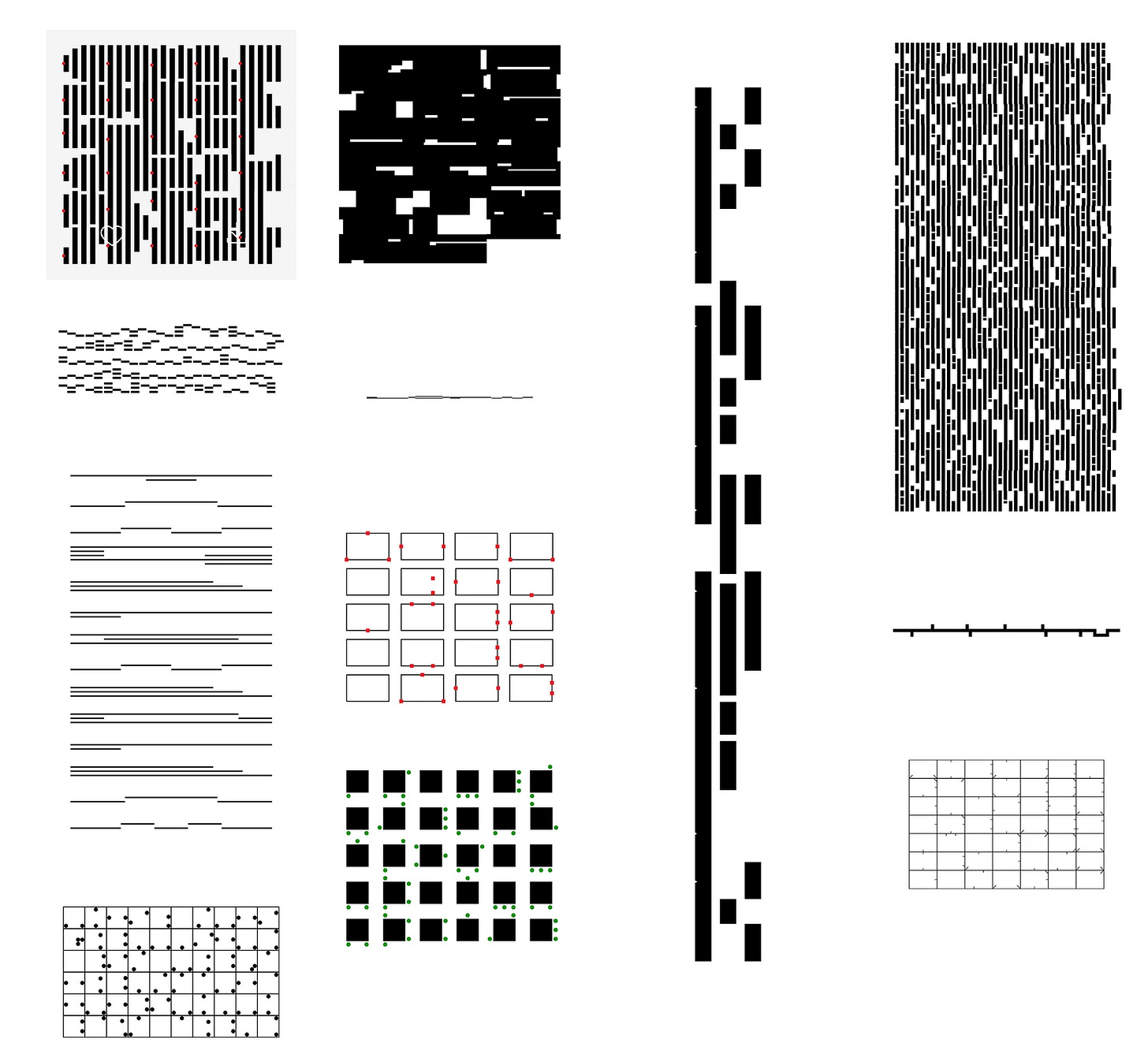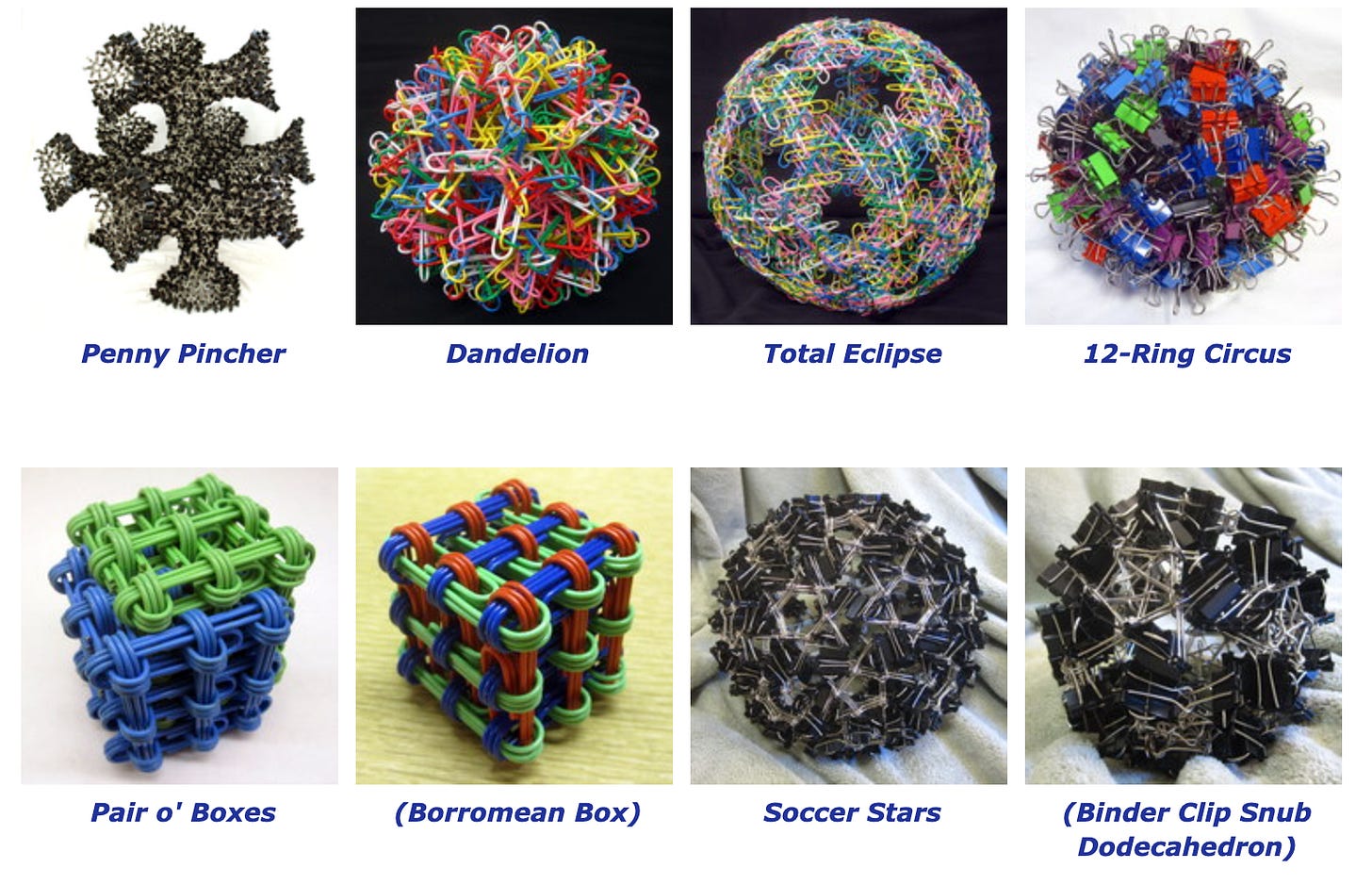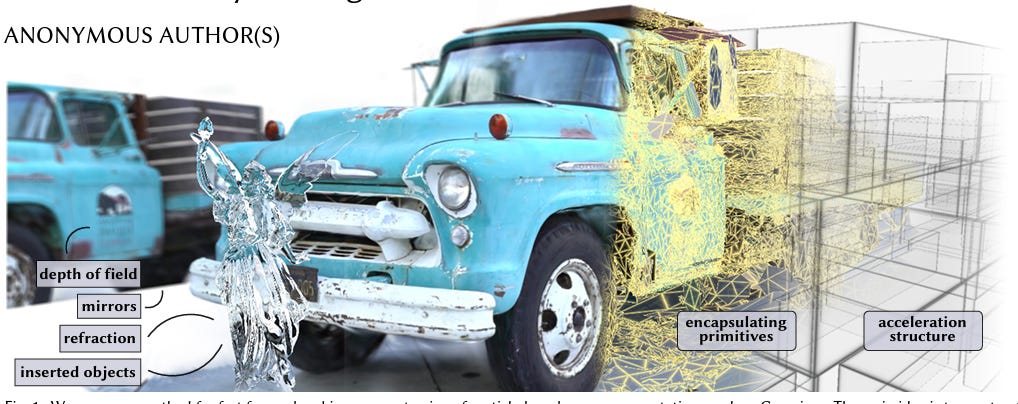ATypography, MediaPipeline, and Designing Wildlife Soundscapes
#079 Creative Coding / Generative Arts
New ideas are like babies, beautiful, ugly and not finished yet. - Max McKeown
Good morning / evening to all of you who continue to read this newsletter! I am so grateful that there are so many of you who also find generative art and creative coding an interesting fascination.
Thinking about the above quote for a couple hours and the following thoughts came from it.
I don’t know about you.. but life just keeps moving quickly. I remember days before 2020 that seemed to take much longer. Now every week goes quicker than the last. Some days a blink, and the day is gone.
Yet upon reflection, I suppose that is part of growing older.
Perhaps one’s brain gets used to knowing that every day is similar to the last.
You wake up, drive to work, work.. drive home. and its already 7 PM.
It’s like clock-work.
I wonder if the perception of time becomes compressed. The normal becomes just intuitive and second nature.
The brain loses interest and goes into autopilot.
The model doesn’t have as much to train on as it once had; and thus the the conscience experience of the everyday world becomes more autonomous.
Yet what is set.. doesn’t mean one needs to stay in place.
Experience is driven by doing. Injecting new experiences into the system in order to learn.
Specifically I’d imagine a hard task provides the brain a run for its money.
It’s good for the ole model to churn some butter.
even though it’s hard on the arms..
… but eventually the finished product comes out and becomes a delightful treat.
I do imagine that kids provide some of that challenging learning. (or at least that is what I’d imagine) These little learning machines aren’t easy tasks yet there is a progression of learning that occurs throughout the life of a parent.
Perhaps the brain, simply doesn’t stay engaged after the kids have fled. Life becomes “too similar” and why perhaps divorce rates increase post kids. There isn’t enough new.. (granted what do I know..)
Perhaps the remedy is simply commit to hard we experiences where one continues to learn.
Even when its messy and unfinished.
Alright. enough of me ideating.
Hope you enjoy some of the links below that I’ve found over the past month.
Much love,
Chris
What do you think? Leave any comments down below.
Alright..
Just because I am curious.
Articles and Tutorials
Atypography
Art movement that graphically represents traditional writing systems in an unconventional way, creating an authentic design that remains readable while concealing text signs at first glance.
Atypography conceals textual content initially but can be deciphered by anyone with time. Reducing glyphs to minimal forms that are widely applicable.
No universality, no atypography
My oh my.. there is so much interesting stuff going on here. I always have found cryptography very fascinating.
Fluid Dynamical Drawing Canvas
A great POC usage of the web browser to create interesting creative drawings and using both the position of the window and speed at which it is dragged across the screen. There is also camera interactivity that will also provide signal to manipulate the canvas.
Mathematical Sculpture
I think about math constantly, and I see and look for math in everything around me. Geometry in particular fascinates me, and I delight in discovering hidden patterns even in the most mundane of objects. By transforming often-overlooked household items into elaborate, mathematical sculptures, I hope to share this sense of excitement, curiosity, and beauty that a mathematical outlook has instilled in me. Maybe I'll even be able to learn and teach some math along the way.
Procedural Animation
This video is a tutorial/explanation for a simple procedural animation technique I recently learned about. Essentially, it's animation rigging using a 2D chain simulation. I provide an animated explanation of the technique, then showcase a few animals I animated with it.
Stipple Effect
Stipple Effect is a pixel art editor that supports animation and scripting. It is designed to facilitate a variety of workflows and to encourage rapid, iterative creation of video game art assets and other types of artwork.
SE was made by a solo indie game developer with the needs and skill sets of other indie devs in mind. It is lightweight and simple to learn and use, yet allows for considerable depth and complexity. SE has a feature-rich scripting API that can be harnessed for the automation of otherwise tedious and repetitive tasks.
Designing Wildlife
An insightful overview of the artist's workflow for creating the wildlife soundscapes called Biota. Using Ableton, he designs a project that generates random, naturalistic audio. The artist delves into his generative techniques, explaining how to achieve randomness through note chance, velocity deviation, and pitch randomization. He also incorporates random modulation, such as wind sounds, using Phaseplant.
Some of the resources he uses to generate Cricket Chirps or just wanting to learn more about soundscape ecology.
Also if wanting to use IRCAM which has some interesting
RAVE Neural Symthesis in Max
RAVE is a deep learning model—specifically, an autoencoder—that can be trained on sound files to create interesting extra-terrestrial sounds. Some of those This tutorial demonstrates how to use Max to run the model.
Normal Map for Pixel Art
I found this to be an interesting technique to get better lighting on pixel art. Essentially the artist draws a normal map to help introduce a spacial aspect. Definitely could see an interesting use case for a transformer
MediaPipe for Dummies
MediaPipe provides cornerstone Machine Learning models for common tasks like hand tracking, therefore removing the same developmental bottleneck that exists for a host of Machine Learning applications. These models, along with their excessively easy-to-use APIs, in turn streamline the development process and reduce project lifetime for many applications that rely on Computer Vision.
3D Gaussian Ray Tracing
Particle-based representations of radiance fields such as 3D Gaussian Splatting, have found great success for reconstructing and re-rendering of complex scenes. Most existing methods render particles via rasterization, projecting them to screen space tiles for processing in a sorted order. This work instead considers ray tracing the particles, building a bounding volume hierarchy and casting a ray for each pixel using high-performance GPU ray tracing hardware. To efficiently handle large numbers of semi-transparent particles, we describe a specialized rendering algorithm which encapsulates particles with bounding meshes to leverage fast ray-triangle intersections, and shades batches of intersections in depth-order. The benefits of ray tracing are well-known in computer graphics: processing incoherent rays for secondary lighting effects such as shadows and reflections, rendering from highly-distorted cameras common in robotics, stochastically sampling rays, and more. With our renderer, this flexibility comes at little cost compared to rasterization. Experiments demonstrate the speed and accuracy of our approach, as well as several applications in computer graphics and vision. We further propose related improvements to basic Gaussian representation, including a simple use of generalized kernel functions which significantly reduces particle hit counts.
TouchMapper
Using Touch Mapper, you can easily create custom outdoor maps for any address of your choice.
If you're interested in 3D printing maps, this tool provides the STL files necessary for creating intriguing projects. It's definitely worth exploring.








